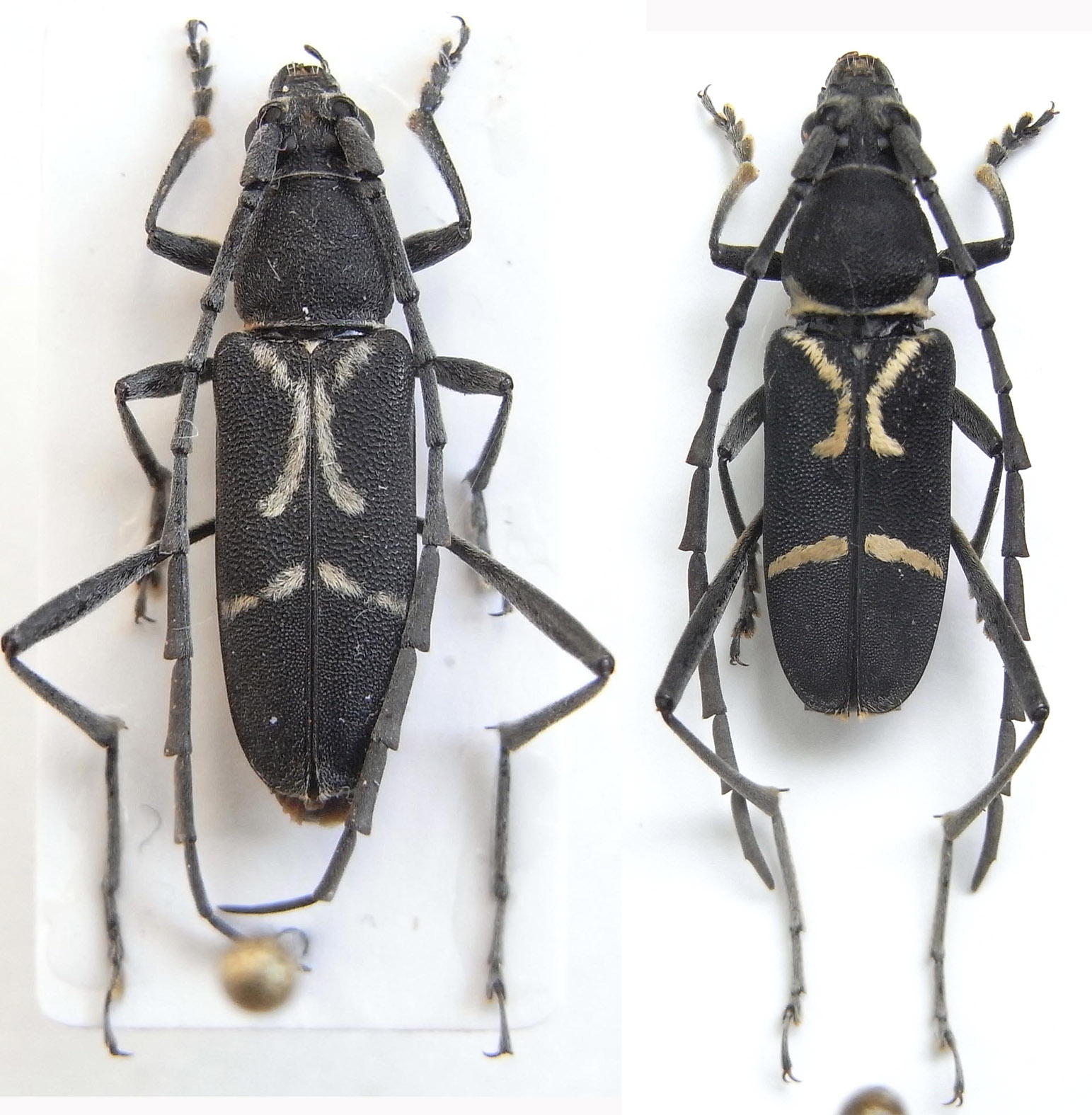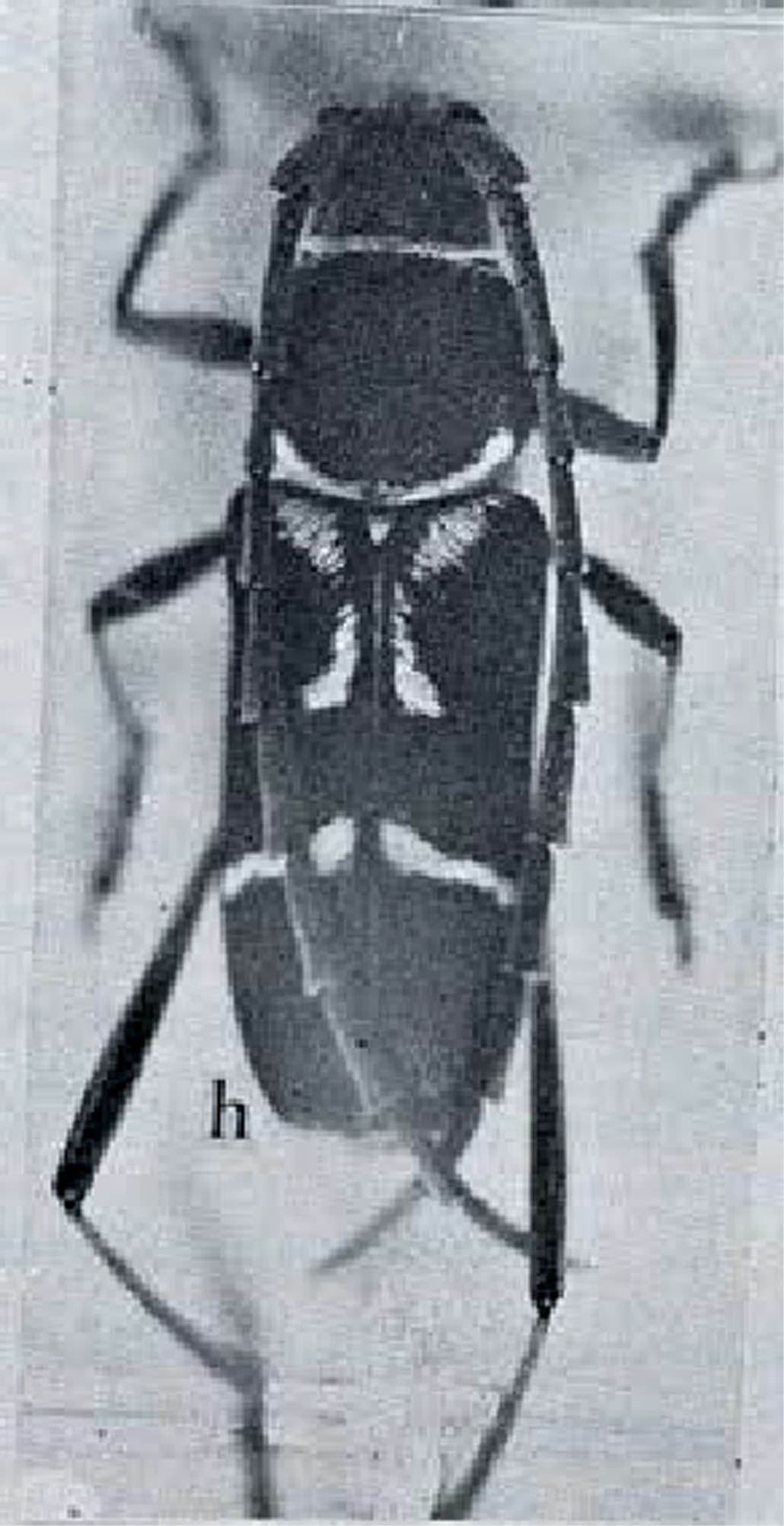| T O P I C R E V I E W |
| Xavier |
Posted - 16/04/2014 : 07:57:02

North-East Laos.Same locality.
I post again these species, searching for their id. I've got series of both specimen ; yellow band are not a sexual dimorphism.
If one of them could be Prothema coomani Pic, 1934 (but which one ??), what is the second one ? |
| 7 L A T E S T R E P L I E S (Newest First) |
| Xavier |
Posted - 02/01/2018 : 10:59:38
Le spécimen n°1 est Prothema vulgare Holzschuh, 2017.
Le spécimen n°2 est Prothema x-fasciatum Holzschuh, 2017. |
| Xavier |
Posted - 09/02/2015 : 09:28:51

Picture 23h from Gressitt & Rondon (1970) : "Prothema signata Pasc."
-Prothema signata Pasc. is another species, with male black, without any light band.
- I think that my specimen with yellow bands and Gressitt specimen belong to the same species, possibly new. (First band not touching the scutellum)
-I still don't know what is specimen with white bands.
Tom has sent me a picture of Prothema coomani Pic (may be the type ?), which is another species. |
| Xavier |
Posted - 08/02/2015 : 16:09:37
ok, if you can provide a picture of one, it would be wonderful  , because I don't see what you mean... , because I don't see what you mean... |
| horshehden |
Posted - 08/02/2015 : 14:57:38
If I remember it well, there are just two bands - located similarly to both your specimens, but their shape looks more like in P. cakli, P. astutum or P. similie (obviously, except the apical part, which is without any band in P. coomani). |
| Xavier |
Posted - 08/02/2015 : 11:25:48
quote:
Originally posted by horshehden
None of them, I'm afraid.
So, could you tell me what is a true P.coomani ? |
| Xavier |
Posted - 07/02/2015 : 15:20:07
What do you think exactly ?  |
| horshehden |
Posted - 07/02/2015 : 13:32:49
None of them, I'm afraid. |


